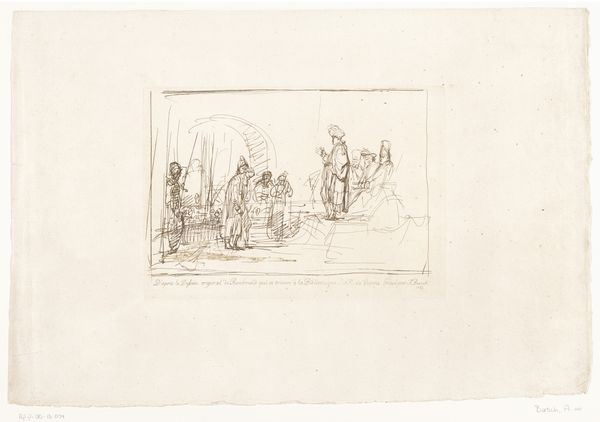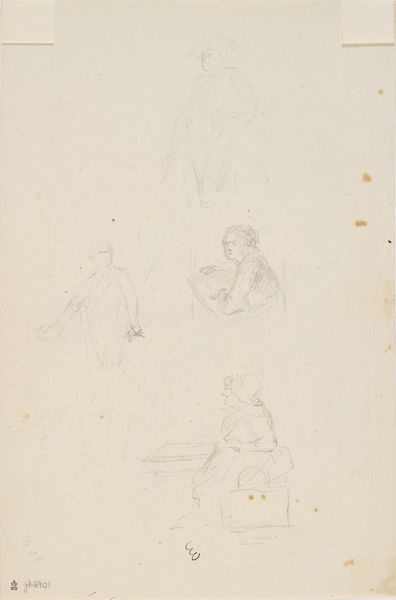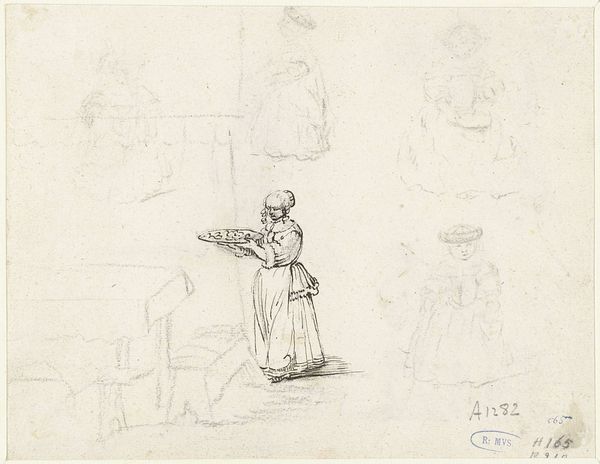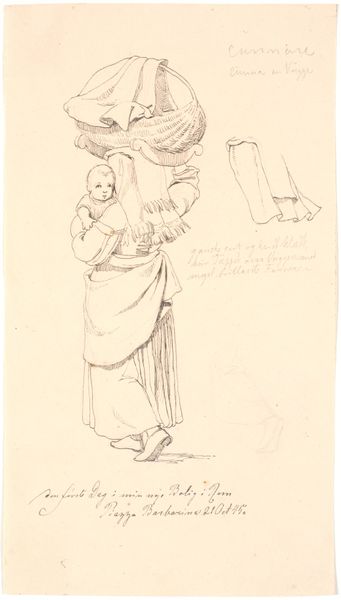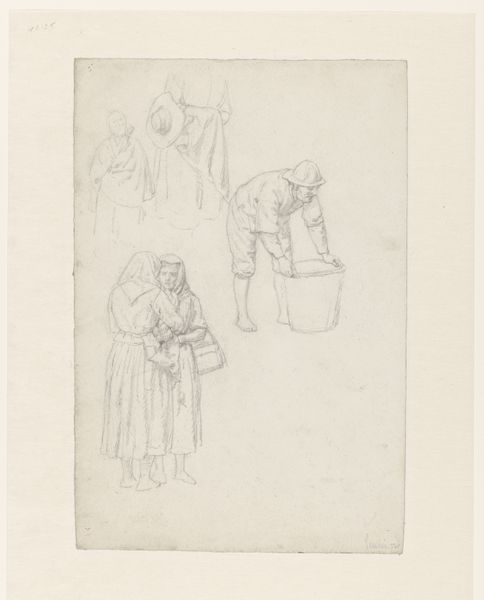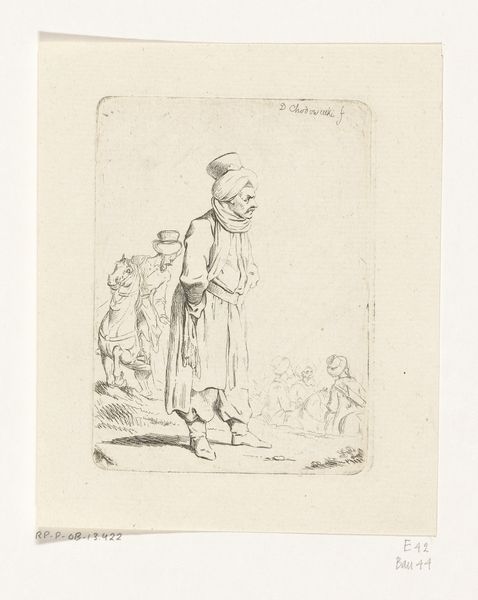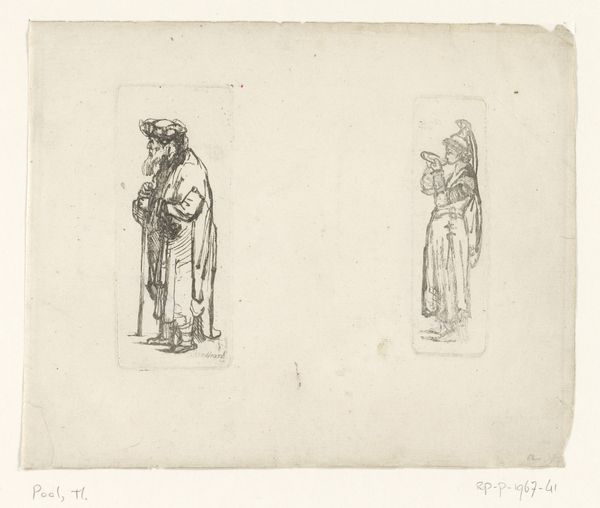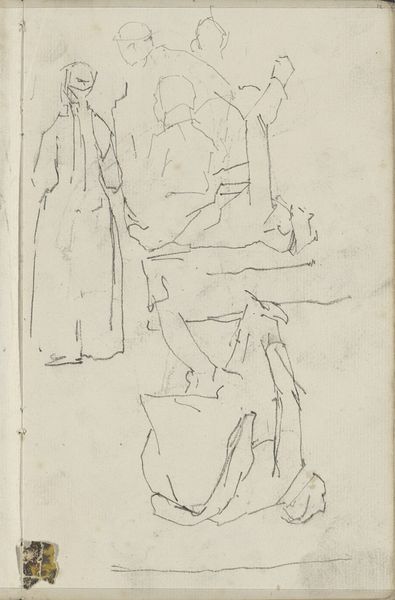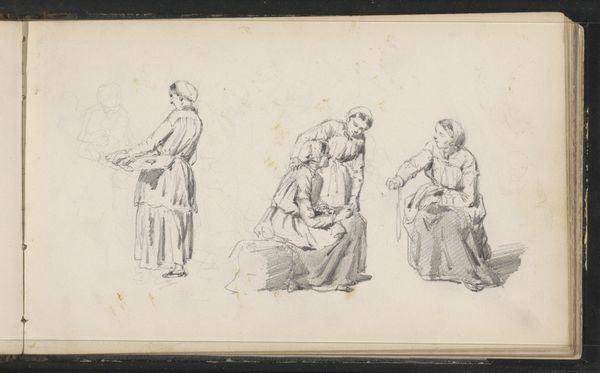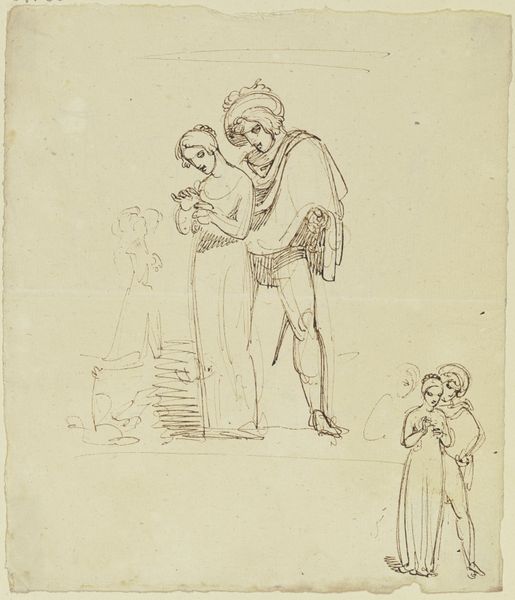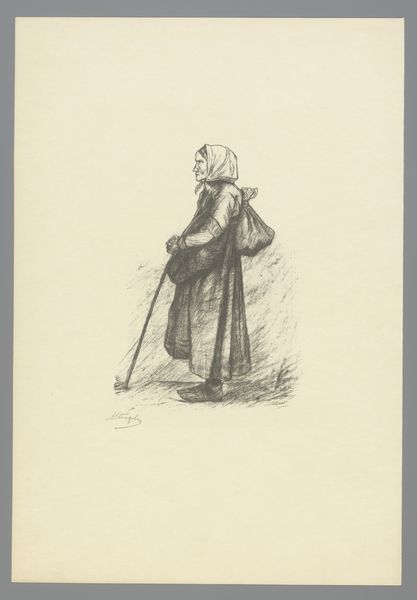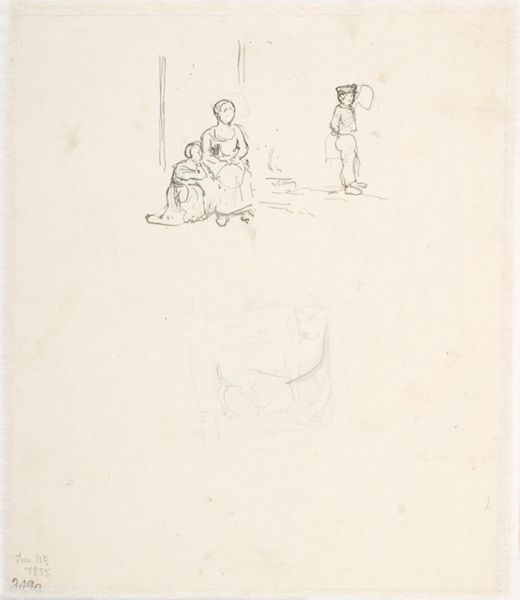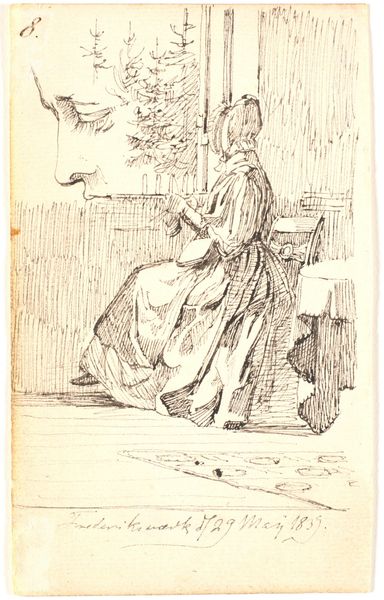
Skitseblad med studier af siddende gammel kone og bedende figurer 1838 - 1840
0:00
0:00
drawing, paper, pencil
#
portrait
#
drawing
#
paper
#
romanticism
#
pencil
#
academic-art
Dimensions: 174 mm (height) x 114 mm (width) (bladmaal)
Editor: This is a pencil drawing on paper by Christen Købke, made sometime between 1838 and 1840. It's titled "Sketch sheet with studies of a seated old woman and praying figures". The studies are loosely sketched, giving a sense of capturing fleeting moments. What do you see in this piece? Curator: This drawing offers a glimpse into 19th-century social dynamics and the role of religious imagery. Købke, often celebrated for his architectural paintings, here turns his attention to the everyday piety of women and the collective act of prayer. How might the contrast between the solitary seated figures and the group dynamic reflect societal roles of women and religious experience at that time? Editor: Well, I see the covered figure and those praying appear somber, contrasting with the smaller figures further down. It feels like capturing everyday life but also hinting at more profound themes, maybe social status, loneliness or perhaps, destitution? Curator: Exactly. Köbke’s sketchbook studies, especially those done in Italy, hint at how he sought to understand a society different from his own in Denmark. The visual hierarchy is interesting; the veiled woman takes precedence. What might her dress, likely specific to the region or religious order, convey about her status? Considering it as academic art, how does Købke engage with established art historical conventions? Editor: Her clothing definitely seems like a statement. The academic style, the careful observation...perhaps he's trying to document, categorize even, the social landscape around him. Curator: Indeed. This sheet becomes more than a simple sketch, it becomes a document of visual observation, categorized under the aesthetic of Romanticism and nascent ethnographic studies. Understanding the politics of imagery gives access into a worldview different from our own, but whose history resonates with familiar hierarchies. I now wonder if these sketches served him when he created narrative painting, which often reflected this separation between individual, family, and city or institution. Editor: That makes the sketch feel more significant than I first thought; it’s a peek into the artist's process, influenced by a cultural lens, of how he eventually builds his paintings. Curator: Precisely. We’ve turned from aesthetic appreciation to insight, a powerful transformation.
Comments
No comments
Be the first to comment and join the conversation on the ultimate creative platform.

